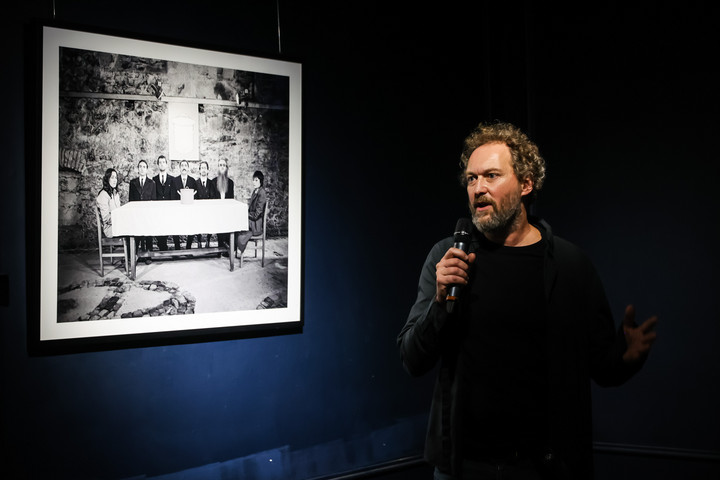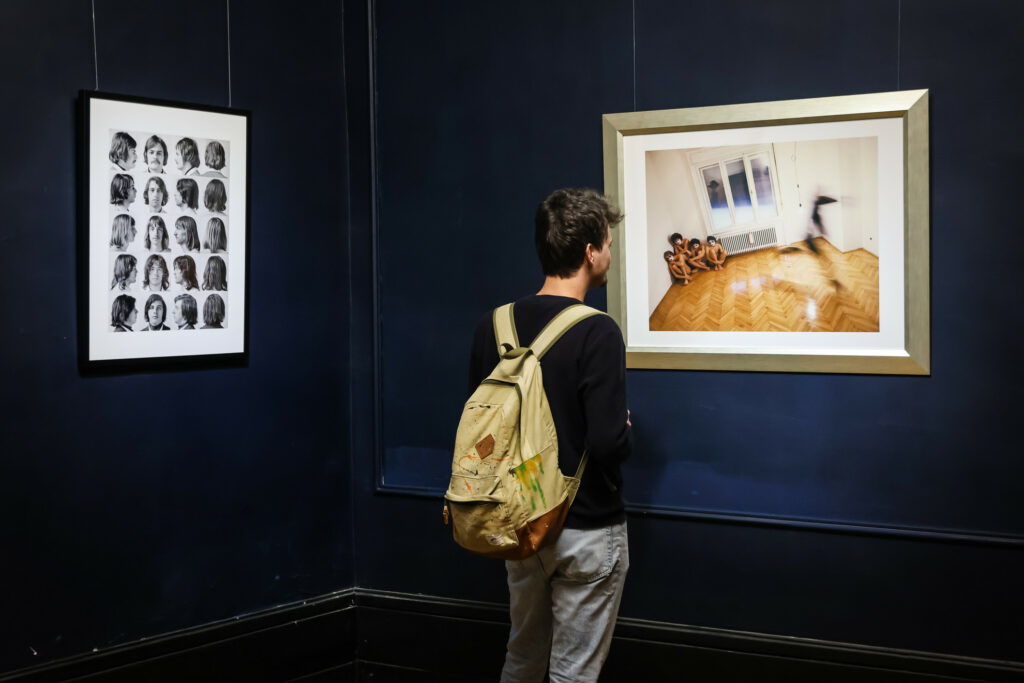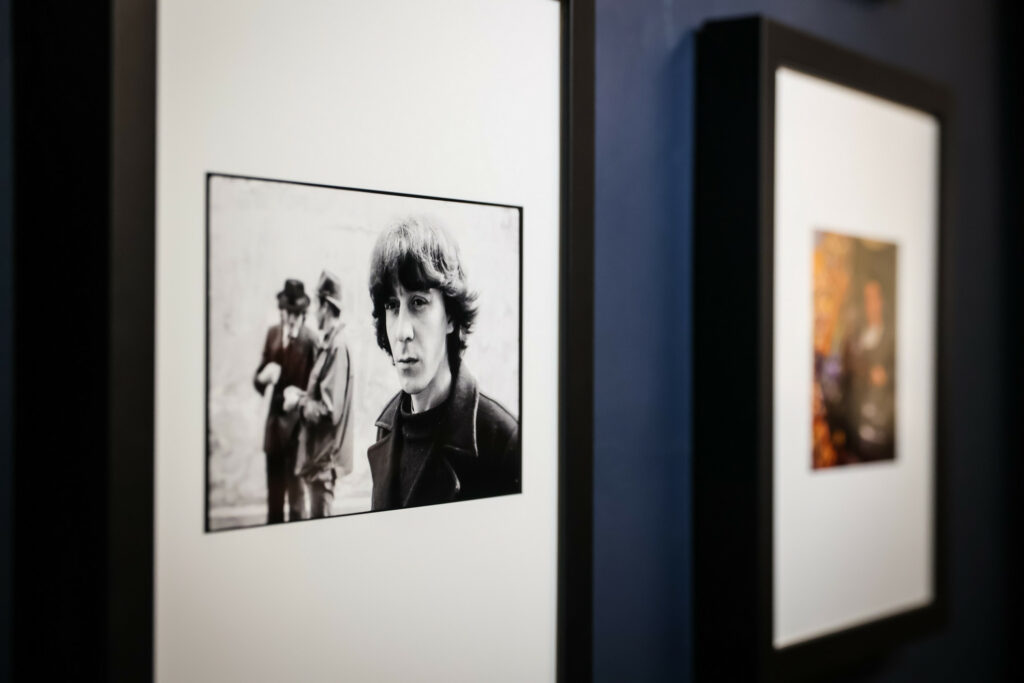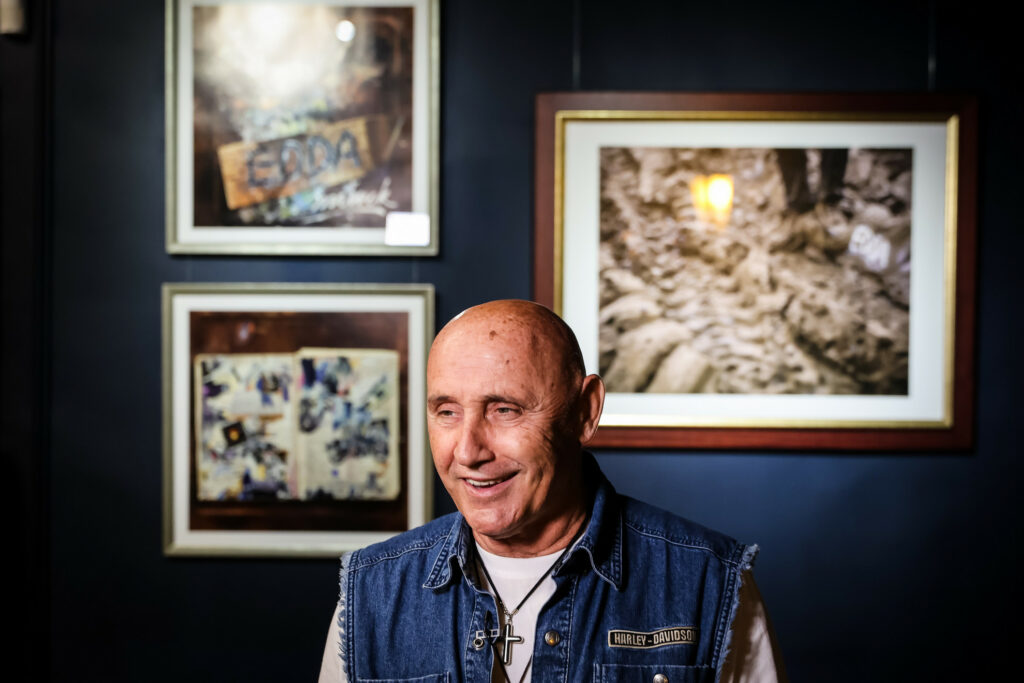Főfótó Galéria has promised an exhibition of album covers. The presented material is both more and less than expected: we can see a collection of some iconic moments of the history of Hungarian rock, recordings that have been burned into our brains for decades.

This Commission recording was not published on the album cover, but everyone knows it
Photo: MH/Tamás Purger
According to the story, when the photographer asked Attila Pataki before the completion of the first Edda album, what his vision was for the cover, he replied: "I have no idea, but it should be damn hard". Instead of damned, he used a word that we don't usually describe, and this is only important because it clearly shows how important and conscious it was even then for a debuting band to create an image. As stated at the opening of the photo exhibition of the Főfotó Galéria (VIII. Baross utca 10.), the photo needed for the cover was based on a thick iron door.

To the right, a recording for KFT's debut album - a different setting finally appeared on the cover
Photo: MH/Tamás Purger
Young people of the analog era still remember that listening to records was not a background activity in many cases. The man took the newly purchased vinyl (then called vinyl) out of the case, welcomed the subtle pop created by the electrostatic tension between the record and the paper, the characteristic smell of the vinyl as a familiar phenomenon, then sat down in the photo studio set up for this purpose to begin to listen to the composition that begins with a soothing chirp. While listening to music, he studied the cover, looked at the pictures, read the names of the authors, and learned the titles of the tracks.

Tamás Cseh, Antoine and Desiré in the background as soon as they found a bug
Photo: MH/Tamás Purger
It is not a Hungarian invention that the album cover has to sell the product. Rock did not allow, but demanded that musicians and cover designers come up with a surprising, unique idea. The album covers of the already mentioned Edda tried to convey the suburbanity, the fringes, the culture of industrial cities, the elephant covers of Karthago tried to build their own universe and legendarium, just like the cover photos of Hungária or Dolly Roll.

Attila Pataki with the photos published on the first two Edda albums
Photo: MH/Tamás Purger
The Főfoto Galéria's exhibition focuses primarily on performers of hard and progressive rock, as well as alternative (formerly known as: underground) music. Here is a photo of Tamás Cseh's Antoine and Desiré album, Edda I. and II., and the back cover of KFT's Macska az útón album: that certain, never-to-be-forgotten image of the four guys with painted faces crouching next to the radiator in a completely empty parquet room.
The truth is that the designers of the exhibition did not always display the finished cover images, and they also presented recordings that were not actually released on disc. The mentioned KFT photo, for example, shows a different setting than the one that was published, and the best-known photo of the AE Committee (the band members sit in a rigid pose around a long, white tablecloth-covered table, with a classic red enamel pot in the middle) was not included on any of the covers , appeared in the press, familiar from there. Just as the recording of Syrius did not become an album cover.

The legendary band of the seventies, Syrius
Photo: MH/Tamás Purger
After all, the bottom line: in the Főfoto Gallery, which is otherwise the interior of a cafe, you can see a small but spectacular collection of rock photography from the past decades. Need more?
Source magyarhirlap.hu












